#nacatole
Note
the idiot on that post who doesn't know about cacio e pepe, white pizza, and countless other dishes...
but you know what's funny. they just sound mad europeans managed to also make iconic use of 'their' ingredients. well do better yourself then !
I KNOW like, my point was that what the world considers iconic “Italian” dishes are actually Italian-American or Italian-inspired American (heavy in tomato sauce), while to us Italians, as well as people who are familiar with real Italian cuisine, the dishes which we’d consider iconic are actually older than the Columbian exchange or only use “Old World” ingredients...
I mean, if I had to say what the most iconic (as in the ones that everyone knows and can find outside of their region) dishes which do not contain American ingredients are, I’d say:
Ferratelle, castagnole, focaccia, piadina, arancini/e, Sicilian cassata, Sicilian cannoli, crostoli/frappe/chiacchere/cenci/galani/lattughe*, Neapolitan pastiera, carbonara, gricia, cacio e e pepe, fegato alla veneziana, castagnaccio, panforte, seadas, cornetto, basil pesto, maritozzo, torrone, zeppole, Maraschino cherries, bruschetta, struffoli, granita, gelato, erbazzone, porchetta, cotognata, frutta di Martorana, nacatole, torta della nonna, taralli/tarallini/tarallucci, grissini, savoiardi/pistokkeddos, ciambelline al vino, farinata, fregula, risotto alla milanese, pizza bianca, tortellini in brodo, crostata, babà, baicoli, budino di riso, ciambellone, biscotti del Lagaccio, cantucci, cotoletta alla milanese, biancomangiare, panettone, gubana, canestrelli, brasato al Barolo, brigidini, pasta con le sarde, canederli, ravioli ricotta e spinaci, pere al vino, cannoncino, pane carasau and guttiau, casatiello, gnocchi alla bava, chnéffléné, coda d’aragosta, bomba/bombolone, crema fritta, tigella/crescentina, delizia al limone, frìtołe, gelo di melone, krumiri, mandorlato, malfatti, meringa, necci, saltimbocca alla romana, mostaccioli, pasta di mandorle, ribollita, panelle, pasta e ceci/fagioli/lenticchie/fave, pasticciotto, polenta, risotto alla marinara, torta pasqualina, frisella, focaccia di Recco, agnolotti, gnocco fritto, sbrisolona, zabajone, vitello tonnato, passatelli in brodo, mozzarella in carrozza, amaretti, plenty of pizze including the original Marinara which is way better than the one people call Marinara today...
*No campanilismi here 🇮🇹
While I’d say that the most iconic Italian dishes which do contain American ingredients are:
Gnocchi di patate, graffa, crocchè (potato); pizza Margherita, pizza alla marinara, pappa al pomodoro, lasagne alla bolognese, lasagne alla napoletana, parmigiana di melanzane, insalata caprese, sfincione, timballo, sun-dried tomatoes, caponata (tomato); tortelli di zucca, gnocchi di zucca (pumpkin); ‘nduja, pasta all’arrabbiata (hot chilies); tiramisù, gianduja, baci di dama, salame di cioccolato, cuneesi al rhum, zuppa inglese, setteveli, zuccotto, Modica chocolate (cocoa); corn polenta (maize); pandoro, panna cotta (vanilla); peperonata (bell peppers); zucchine alla scapece, pasta alla nerano (courgettes).
So yes, while the Columbian exchange did influence Italian cuisine, either by leading to the evolution of pre-existing dishes (EG.: pangiallo was invented over 2000 years ago and nowadays it’s not uncommon to see people add dark chocolate to the recipe; the original pizza alla marinara did not contain tomato sauce and was made with anchovies, capers, garlic, black Gaeta olives, oregano and olive oil - all of which are very Mediterranean ingredients) or to the creation of new ones, but claiming that New World ingredients-based dishes are all there is to Italian cuisine, or that its most iconic dishes are made with them is factually wrong and the reason why this stereotype exists in the first place is due to Italian-American culture/US stereotypes of Italy and Italians being passed off as authentic Italian and its spread outside of the US is a direct result of US cultural imperialism.
I also find it ironic how they all conveniently ignore that Asian, African and other European cuisines outside of Italy’s also use American ingredients... I have yet to see someone claim that shahi paneer is not Indian or that paprikás csirke is not Hungarian while I have seen plenty of Americans claim that pizza Margherita (which they believe is the only kind of pizza there is) is actually American just because tomatoes are not native to Italy.
2 notes
·
View notes
Text

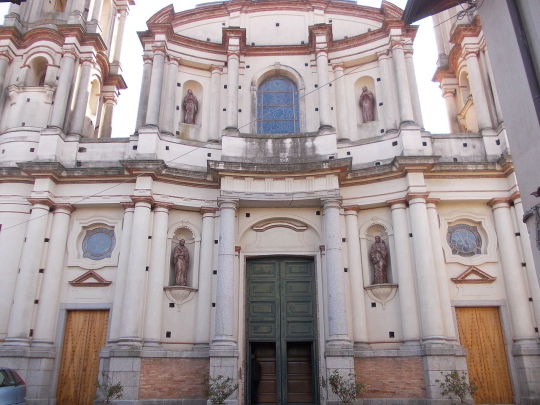
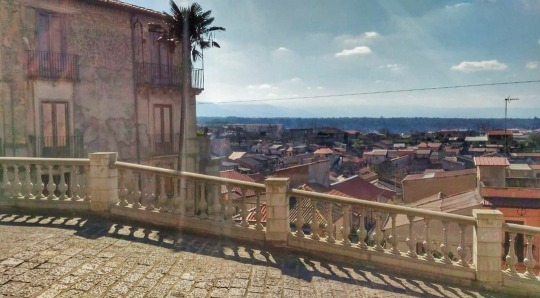
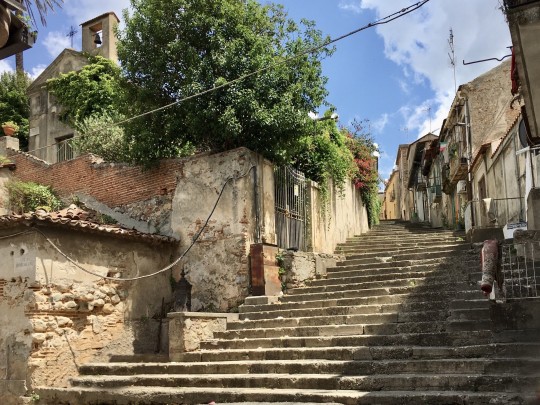



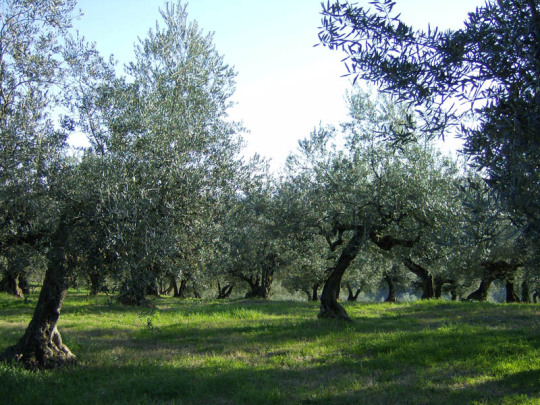
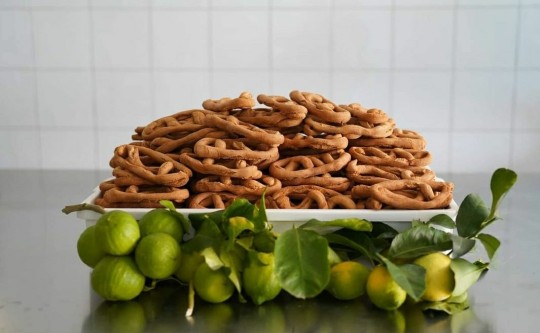
Polistena, Calabria, Italy
The town of Polistena is famous for homemade Nacatole, a typical Calabrian shortcrust pastry sweets with the shape of a naca, the cradle of babies, from which the name "nacatole" derives.
Nacatole are flavored with anise or bergamot, a typical citrus fruit that comes almost exclusively from the region of Calabria.
Historically, these sweets were used as a wedding invitation; the parents of the spouses took them to the guests' homes to announce the marriage of their children.
Photos by @marynasso39,
Follow us on Instagram, @calabria_mediterranea
#polistena#calabria#italy#italia#italian#south italy#southern italy#mediterranean#europe#stairway#food#italian food#italian recipe#citrus fruit#bergamot#citrus#olive trees#olive tree#olive farm#olive grove#olive groves#trees#decay#biscuits#church#nacatole
84 notes
·
View notes
Photo

Mamma, hai presente le cascate del Marmarico? Quelle di oggi erano un tantinello più imponenti. Una figata. Il cartello diceva “una delle 7 meraviglie del mondo”. Ciò non toglie che per me le migliori restano quelle del Marmarico. Per raggiungere le nostre ti fai quella camminata, arrivi lassù esausto e ti butti tutto sudato nell’acqua ghiacciata. Poi se non sei morto ti mangi il panino con salame piccante e provola. Oggi il panino con salame piccante non c’era. C’erano 2 manghi, 1 maracuja, 1 goiaba. Ah, però mi erano rimaste anche delle nacatole di Speranza. Comunque ma’, che spreco d’acqua. E dopo rompono le scatole a me se lascio l’acqua del lavandino aperta mentre mi lavo i denti... Di ritorno dalle cascate del lato brasiliano, sul bus erano tutti intenti a guardare le foto fatte durante la giornata. Dicono che il lato brasiliano sia meno interessante e più breve di quello argentino che visiteremo domani. È stata una giornata all’insegna dell’acqua. Oltre le cascate c’era la pioggia. Ho i piedi fracidi. In più mi sono chiuso il dito in un cestino dei rifiuti del parco e ho l’unghia del medio nera. Sembro un muratore adesso. Alle cascate c’era un folto gruppo di fedeli che pregava e cantava. Perché non vieni a fare un pellegrinaggio a Iguazu anche tu? A proposito, ieri in ostello ho conosciuto Jaqueline, una di Rio de Janeiro che è venuta in Italia solo per fare un tour di pellegrinaggio. Non era stata a Firenze ma conosceva San Giovanni Rotondo come le sue tasche. Adesso invece ti scrivo dalla frontiera. Siamo scesi per avere il timbro d’uscita dal Brasile e aspettiamo da un bel po’ un altro bus che ci porti alla frontiera in Argentina, pochi metri più in là. Siamo nella terra di mezzo, non siamo né carne né pesce. La mia prima volta in questo paese termina qua, ma tornerò perché ci sono ancora tanti piatti da fotografare per mandarti la foto, tanti rischi da correre, tante nuove raccomandazioni da fare. Di sicuro in questi pochi giorni abbiamo conosciuto tante persone e creato i presupposti per fare un altro viaggio. Da parte tua ora mi aspetto frasi del tipo: “non si può conoscere tutto” o “del meglio non c’è fine”, che sai che mi danno sui nervi. (presso Cataratas De Foz Iguacu) https://www.instagram.com/p/B8pteojoer8/?igshid=1hmmkivclc9wv
0 notes
Photo

NACATOLE CALABRESI (#Donuts #Calabrese Style) These delicious small fried #sweets are traditionally from the region of #Calabria which is where Suzanne's family is originally from. They were #handmade by my mother in law Maria for Suzanne's birthday. Do you want us to make a video recipe for it? TAG A CALABRESE FRIEND (at Sydney, Australia)
0 notes
Text
Squisitezze calabresi
"Nacatole"
- Ingredienti: 500 gr. di farina, 4 uova, 125 gr. di burro, 130 gr. di zucchero, 2 cucchiai di vino bianco, un bicchierino di grappa, la buccia grattugiata di un limone, un pizzico di sale, zucchero a velo q.b.
- Preparazione: Sbattere in una ciotola le uova e lo zucchero con la frusta, fino ad ottenere un composto spumoso e omogeneo. Aggiungere il burro sciolto, mescolando bene il tutto. Formare sulla spianatoia una montagnola con la farina, creare una conca nel centro e versarvi dentro il composto preparato in precedenza. Aggiungere un pizzico di sale, la buccia di limone, il vino bianco e la grappa. Impastare con forza fino ad ottenere una palla liscia ed elastica. Lasciarla riposare in frigorifero per almeno un’ora. Dividerla in 3-4 panetti e stendere con ognuno di essi una sfoglia sottile sulla spianatoia infarinata. Tagliare con la rotellina dentata delle losanghe o altre forme a piacere e friggerle in olio bollente. Toglierle quando sono ben dorate e disporle su un vassoio ricoperto di carta assorbente. Cospargere con lo zucchero a velo.
0 notes
Text
New Post has been published on Living a Life in Colour
New Post has been published on http://www.livingalifeincolour.com/bergamot-the-citrus-you-may-not-realise-that-you-already-knew/
Bergamot: the citrus you may not realise you already know
Bergamot. Sounds exotic, doesn’t it. Most of you would say you have never tried one although you likely already have. It’s the flavour that makes Earl Grey tea distinct. Many of you may not have even realised that flavour was a citrus fruit but there it is. The bergamot is a type of fragrant but sour orange. Actually it is a hybrid (most citrus fruits are) between a lemon and a sour orange (which itself is a hybrid between the pomelo and the mandarin). Bergamots are mostly grown in the southern part of Calabria where they first appeared in the 17th century. Fortunately for Calabrians, bergamot is a fastidious tree, stubbornly refusing to grow well outside of this small part of Calabria which offers a favourable climate and rich soil.
Bergamot are a lucrative crop due to their valuable essential oils which are used in perfume, although it takes 100 kilos of bergamot to make half a litre of oil. Adding bergamot oil to a perfume makes the scent last longer. In fact, the first Eau de Cologne was a bergamot-based perfume invented in the 18th century by a Piedmontese named Giovanni Maria Farina who emigrated to Cologne, Germany. He had whole bergamot fruit shipped to Cologne to make his famous perfume. In the 19th century, bergamot oil’s antiseptic and antibacterial qualities were discovered by Francesco Calabro when he saw that wounds incurred from workers cutting themselves peeling the bergamot would heal quickly and not become infected. Soon it began to be esteemed also for its medicinal use. Today it is still being researched as a possible antiviral treatment for AIDS and as an antidepressant.
Bergamot oil, honey and marmalade
Bergamot granita
Le nacatole (bergamot biscuits)
In Calabria, bergamot is also made into marmalade, flavoured honey, flavoured olive oil, granita (a slushy ice drink), bergamot syrup, bergamot sorbet, soda and in biscuits (le nacatole). The juice is less sour than lemon juice but doesn’t have a strong bergamot flavour. For the characteristic bergamot taste, the zest is needed. Bergamot season began in October and will stretch through the end of the year. We have been experimenting with cooking bergamot: bergamot risotto (while risotto is not traditional to Calabria, it is a delicious use for the fruit that is prepared in Calabria), bergamot tart (like a lemon tart but with a bergamot tang) and bergamot “lemonade”.
Risotto al bergamotto (bergamot risotto) – Calabria
The juice while sour, lacks the characteristic bergamot flavour. The zest is included for this reason although it can be intense if too much is added. Add sparingly and taste before adding more to ensure you are happy with the amount. For step-by-step illustrated instructions, please click here.
1 small onion (preferably a Tropea onion), skin and ends removed and finely chopped
15 mls (1 tablespoon) extra-virgin olive oil
350 grams risotto rice
45 mls (3 tablespoons) bergamot juice
1 litre vegetable broth, boiling
2 pinches bergamot zest (about 5 grams)
50 grams Parmigiano-Reggiano cheese, finely grated
4 basil leaves, rinsed, dried and chopped
Sea salt
Add the onion and the olive oil to a large saucepan or risotto pan and cook over low heat, stirring until the onion is soft (about 10 minutes). Add the rice and stir for 4 to 5 minutes until it begins making a squeaking noise. Add the bergamot juice and a teaspoon of salt and cook, stirring until the juice has evaporated. Add the stock to cover the rice. Stir the rice continuously, adding broth as necessary to keep the rice covered until the rice is cooked and still al dente in the centre, 16 to 20 minutes depending on the variety of rice. Add the zest and stir to combine. Taste the risotto to see if you prefer more of the zest. Stir through the cheese and basil and serve immediately.
0 notes